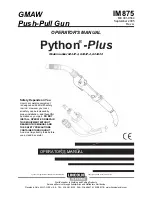
2007.03.07
Flow2 stairlift
Tab 04: Install, adjust and release
www.ThyssenKruppAccessibility.nl
38
Installation without flash card data
stationary at a charging contact. Rotations can therefore only take place 'on top of' 'H' (= halt) and 'P'
(= park) actions. The main purpose of a rotation is to turn the chair into a user-friendly mount/
dismount angle.
Direction of rotation
A rotation can also be used to correct for awkward situations, such
as:
Suppose we have the same narrow stairs and rail as discussed in
the previous example. The rail length on the landing is actually so
short that it would be impossible for the lift to reach the required
angle A7 from the start angle A0 while it is moving.
Here the rotation provides an answer. Enter an A7 as the start angle
with an associated rotation r0. On arrival, the lift will now come to a
halt on the charging contact at an angle of 70. Now the rotation
point r0 will turn the seat further to the required 0.
7.4
Park and halt locations
Each rail has two or more halt locations, recognisable by the charging contacts. The control expects
a unique number for each charging contact. By default, the numbering starts at the reset contact (0)
and is increased by 1 at each contact, regardless of whether it is a parking or a halt location.
The actual difference between a halt location and a parking location is that, when it is operated with
the armrest control, the lift will not stop at the parking locations but will carry on going without any
change in speed. The lift will stop at a halt location. Parking locations are thus only intended for
parking the lift and are therefore only recognised with a call or park command.
Of course it is possible to program a halt location as a parking location!
Fig. 7-6
Direction of rotation
1
Fig. 7-7
1


































